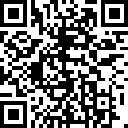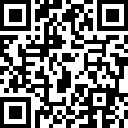Notifications
Key Indicators in Technical Analysis
16 August 2023

If you have read our article “Basic Types of Charts in Technical Analysis”, now it’s time to unlock the secret with technical analysis indicators. Let’s dive in!
- Moving Averages:
Moving averages calculate the average price of a currency pair or any other asset over a specific period, such as 10 days or 50 days, to reveal the trend. By plotting these averages on a chart, you can easily spot if prices are going up or down. They help you identify potential buy or sell signals to make trading decisions like a pro!
- Relative Strength Index (RSI):
RSI helps you measure the strength and momentum in the markets. This oscillator ranges from 0 to 100. When it goes above 70, it suggests the asset might be overbought. On the contrary, when it drops below 30, it indicates the asset might be oversold.
- Bollinger Bands:
Bollinger bands are like dynamic rubber bands hugging the price chart. They consist of a moving average line in the middle, with two bands above and below, representing standard deviations from the average. When the price moves close to the bands, it could mean a surge in volatility. Bollinger Bands are perfect for identifying potential price breakouts or reversals so that you won’t miss those exciting trading moments!
Summary
You can combine these indicators to build your trading superpower! For example, you might use moving averages to spot trends, RSI to identify overbought or oversold conditions, and Bollinger Bands to confirm potential breakouts. The possibilities are endless, and by blending different indicators, you can develop your own unique trading strategy.
Join the ultimate trading ecosystem
Ultima Markets is a member of The Financial Commission, an international independent body responsible for resolving disputes in the Forex and CFD markets.
All clients of Ultima Markets are protected under insurance coverage provided by Willis Towers Watson (WTW), a global insurance brokerage established in 1828, with claims eligibility up to US$1,000,000 per account.
Ultima Markets is the first CFD broker to be part of United Nations Global Compact.
RISK DISCLOSURE
Risk Warning: Trading Forex and CFDs carries the risk of losing substantially more than your initial investment and should only be traded with money you can afford to lose. You do not own or have any rights to the assets that underlying the derivatives (such as the right to receive dividend payments). Ensure you fully understand the risks involved. Trading leveraged products may not be suitable for all investors. Before trading, please take into consideration your level of experience, investment objectives and seek independent financial advice if necessary. Please consider our legal documents and ensure that you fully understand the risks before you make any trading decisions.
General Advice Warning: The information on this website is a general nature only and any advice has been prepared without taking account of your objectives, financial situation or needs. Accordingly, before acting on the advice, you should consider the appropriateness of any advice having regard to your objectives, financial situation and needs, and after considering the legal documents.
Regional Restrictions:This information or devices on this website is not directed or offered to residents of certain jurisdictions such as the United States, North Korea etc. For more information, please contact our customer support team.
Ultima Markets, a trading name of Ultima Markets Ltd, is authorized and regulated by the Financial Services Commission "FSC" of Mauritius as an Investment Dealer (Full-Service Dealer, excluding Underwriting) (license No. GB 23201593). The registered office address: 2nd Floor, The Catalyst, 40 Silicon Avenue, Ebene Cybercity, 72201, Mauritius.
Huaprime EU Ltd, registered number HE423188, and, with a business address at Georgiou Griva Digeni 122A, Kallinicos Court, Shop 1—Upper level, Neapolis, 3101 Limassol, Cyprus, is regulated by the Cyprus Securities and Exchange Commission, which has CIF license number 426/23.

Copyright © 2025 Ultima Markets Ltd. All rights reserved.
-
Messenger
Continue on Messenger
Take the conversation to your Messenger account. You can return anytime.
Scan the QR code and then send the message that appears in your Messenger.
Open Messenger on this device. -
Instagram
Continue on Instagram
Take the conversation to your Instagram account. You can return anytime.
Scan the QR code to open Instagram. Follow @ultima_markets to send a DM.
Open Instagram on this device. -
Live Chat
-







